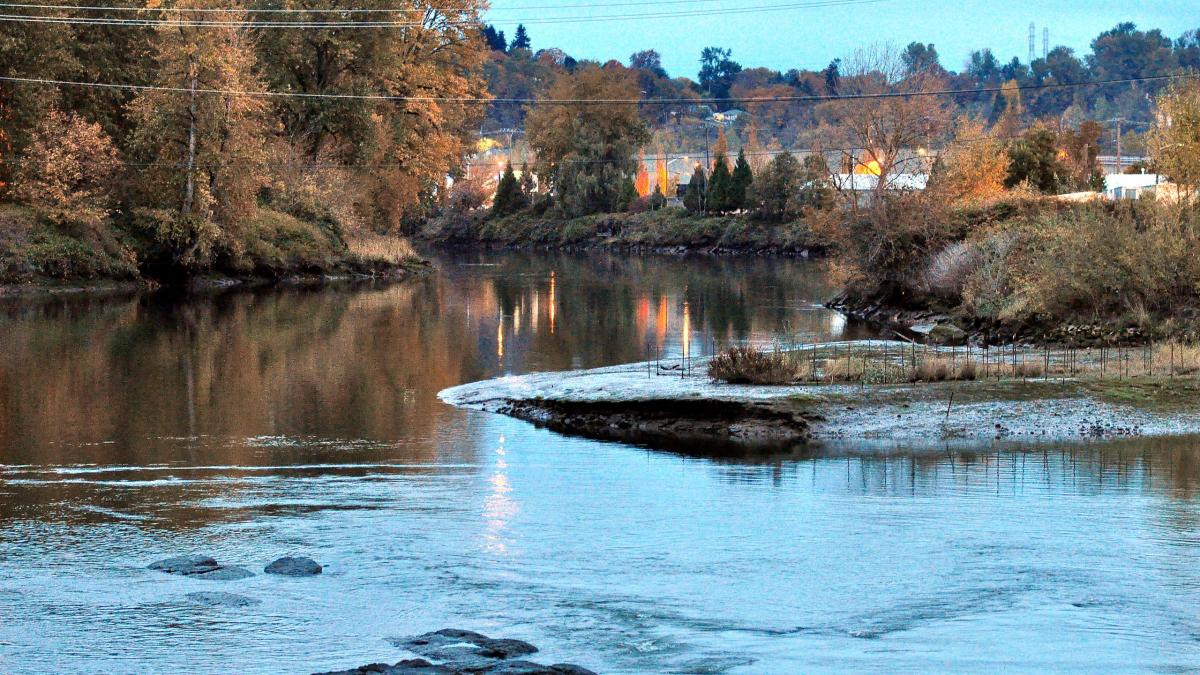
Rates of sedimentation on the Duwamish River are critical to the EPA's cleanup plan.
Investigators in the UW Department of Civil and Environmental Engineering have been conducting research on sedimentation dynamics that are critical to the “natural recovery” of portions of the Lower Duwamish Waterway Superfund Site. On April 28th, doctoral student Maggie McKeon and faculty researcher Alexander Horner-Devine presented the results of their recent investigation of sedimentation rates and transportation dynamics within the Duwamish Superfund site and their implications for the selected remedy of natural recovery over large portions of the site.
Natural recovery relies on cleaner upriver sediments to accumulate over contaminated sediments within the site. The amount of time EPA has predicted it will take for natural recovery to effectively isolate contaminants at the site is 17 years. McKeon’s research suggests that the rate of sedimentation and sediment transportation dynamics within the site may result in a doubling of the predicted recovery time, extending the window when people may be exposed to the site’s contaminants, including PCBs, arsenic, cPAHs, and dioxins/furans.
Representatives of EPA, the Washington State Department of Ecology, City of Seattle, King County, Port of Seattle, and the Duwamish River Cleanup Coalition (DRCC) attended the research presentation. UW SRP will partner with the investigators and DRCC – EPA’s Community Advisory Group for the Duwamish site – to summarize the results in an easily accessible research brief for distribution to the site’s agency and community stakeholders.

